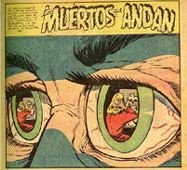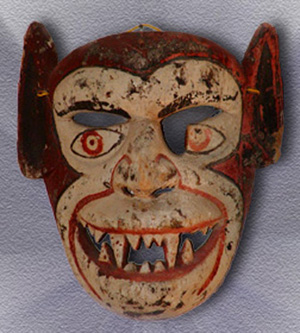
The illustrated novel, or foto-novela, also known as historietas, has recently enjoyed a burst of mainstream popularity in the United States. (Technically, the foto-novela is illustrated with photos while the historieta employs drawings, but the two terms often are used interchangeably.) These “comic books” with complex perspectives and dark imagery have had a long history and far-reaching impact within the Latino and Chicano communities in the U.S., as well as Mexico and Latin America, where they continue to thrive as a mainstay of popular culture.
In Mexico, the form has its roots in turn of the century historietas, which were originally illustrated cartoon versions of popular works of European literature. Published in numerous episodes, these stories eventually gave way to original series that focused on contemporary Mexican life. Popular to this day, the modern historieta ranges from educational to political, entertainment to pornography, and everything in between. Print runs for these series can run as high as 250,000 or more, reaching an enormous reading public.
In the United States, the foto-novela/historieta has a distinct manifestation in the Chicano/Latino community, providing a unique idiom through which the community addresses social concerns using a highly innovative visual language. As a popular and flexible form, the foto-novela has been used in increasingly fresh ways by visual artists and writers to address important social issues within the Chicano/Latino community. Activists and religious groups have also turned to the form as an organizational tool for outreach, education and proselytizing.
The graphically illustrated historieta and the photographed foto-novela use deceptively simple didactic stories. The plots are usually high melodrama, with classic "rags-to-riches" situations, or secretive, forbidden love between two people from different social classes. Some of the stories, however, have elements of the supernatural or are loaded with underworld figures that suggest film noir. There is often a strong idealism in the books as well, carrying a moral message along with the idea that that romantic dreams and aspirations can come true. Stylistically, the foto-novela is often noted for distinctive use of angles, lighting, composition and space.
Chicano/Latino comic book artists in the United States have been heavily influenced by the form, adapting and transforming the style and melodrama to explore different subcultures, darker realities and questions of identity. Gilbert and Jaime Hernandez’ work Love and Rockets not only helped popularize the foto-novela form but played an important role in sparking the American alternative comic and graphic novel movement.










